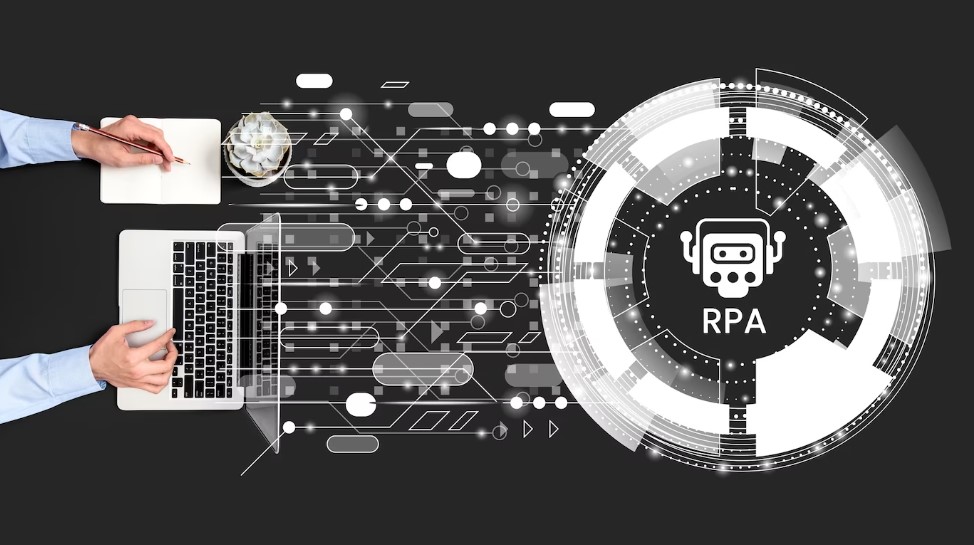The Ethics of AI Editing: Balancing Efficiency with Responsibility

Table of Contents
- Introduction
- The Ethics of AI Editing
- Issues of Bias in AI Editing
- Issues of Privacy in AI Editing
- Responsibility in AI Editing
- How to Use AI Editing Tools Responsibly
- Conclusion
As AI-powered editing tools become more prevalent, it is important to consider the ethical implications of their use. While these tools offer many benefits, they can also raise issues of bias, privacy, and responsibility. In this blog post, we explore the ethics of AI editing and how to use these tools responsibly and ethically.
The Ethics of AI Editing
The Ethics of AI Editing refers to the ethical considerations and principles surrounding the use of Artificial Intelligence (AI) for the purpose of editing content, such as text, images, videos, and audio.
The use of AI in editing has become increasingly prevalent in recent years due to advancements in machine learning and natural language processing technologies. AI editing tools are capable of automatically generating and correcting content, improving the quality and efficiency of the editing process.
However, the use of AI editing raises several ethical concerns that must be addressed. These include:
- Bias: AI editing algorithms can replicate existing biases present in the data they are trained on. For example, a language model trained on a corpus of predominantly male authors may generate biased text that reflects gender bias.
- Accuracy: While AI editing tools can improve the accuracy of content, they may also introduce errors, such as misinterpretations of context or cultural nuances.
- Transparency: It can be challenging to determine the source of the content when AI is involved in the editing process. This lack of transparency can lead to confusion and mistrust.
- Intellectual property: The use of AI editing tools raises questions about ownership and authorship of the edited content. For example, who owns the rights to a piece of text that has been generated or edited by an AI algorithm?
To address these ethical concerns, it is essential to ensure that AI editing tools are developed and used in a responsible and transparent manner. This can be achieved through rigorous testing and validation of algorithms, open sharing of data and methodologies, and clear communication of the role of AI in the editing process.
Additionally, guidelines and standards can be developed to promote ethical AI editing practices, such as avoiding the use of biased or harmful language, providing attribution for edited content, and prioritizing human oversight in the editing process.
Issues of Bias in AI Editing
Issues of bias in AI editing refer to the potential for algorithms to replicate and perpetuate existing biases and prejudices present in the data they are trained on. This can result in edited content that is inaccurate, unfair, or discriminatory.
There are several ways in which bias can manifest in AI editing:
- Data bias: AI editing algorithms learn from the data they are trained on, and if that data is biased or incomplete, the resulting algorithms may perpetuate those biases. For example, if a language model is trained on a corpus of text that contains gender stereotypes, the model may generate biased text that reflects those stereotypes.
- Selection bias: In some cases, AI editing tools may be biased in their selection of content to edit. For example, a news editing algorithm may prioritize stories that are more likely to generate clicks, resulting in biased coverage of certain topics.
- Cultural bias: AI editing algorithms may struggle to understand and accurately represent cultural nuances, resulting in edited content that is insensitive or offensive.
- Human bias: The individuals who design and train AI editing algorithms may inadvertently introduce their own biases into the system. For example, a team of mostly male engineers may design an algorithm that is biased against women.
To address issues of bias in AI editing, it is essential to recognize the potential for bias and take steps to mitigate it. This can include:
- Diversifying the data used to train AI editing algorithms to ensure a more comprehensive representation of different groups and perspectives.
- Conducting regular audits and testing of AI editing algorithms to identify and address any biases that may be present.
- Providing clear guidelines and standards for the use of AI editing tools, such as avoiding the use of biased or harmful language.
- Prioritizing human oversight in the editing process to ensure that AI-generated content is reviewed and edited by human editors who can identify and correct any potential biases.
By taking these steps, it is possible to minimize the potential for bias in AI editing and ensure that the edited content is accurate, fair, and representative of diverse perspectives.
Issues of Privacy in AI Editing
Issues of privacy in AI editing refer to concerns around the collection, storage, and use of personal information in the editing process. As AI editing algorithms become more sophisticated, they may require access to sensitive information, such as personal data, biometric data, or confidential business information, raising questions about how this information is collected and used.
There are several ways in which privacy can be compromised in AI editing:
- Data collection: To train AI editing algorithms, large amounts of data must be collected and processed. This data may include personal information, such as names, addresses, and financial information, which could be used to identify individuals.
- Data storage: Once collected, data used to train AI editing algorithms must be stored securely to prevent unauthorized access. However, the storage of this data may still be vulnerable to cyberattacks, data breaches, or other security risks.
- Data sharing: AI editing algorithms may require access to data held by third-party providers, such as social media platforms or cloud-based storage services. This raises concerns about how this data is shared, stored, and used by these providers.
- Transparency: It can be challenging to determine what personal information is being collected and how it is being used in the editing process. This lack of transparency can lead to mistrust and concerns about the privacy implications of AI editing.
To address issues of privacy in AI editing, it is essential to ensure that personal information is collected and used in a responsible and transparent manner. This can be achieved through:
- Limiting the collection of personal information to only what is necessary to train and use AI editing algorithms.
- Ensuring that personal information is stored securely and in compliance with relevant privacy laws and regulations.
- Providing clear and concise privacy notices to users that explain how their personal information is being used in the editing process.
- Limiting access to personal information to only those who require it for the editing process and implementing strict access controls to prevent unauthorized access.
By taking these steps, it is possible to ensure that the use of AI editing tools respects individuals' privacy and maintains the confidentiality of sensitive information.
Responsibility in AI Editing
Responsibility in AI editing refers to the ethical and legal obligations of those involved in the design, development, and use of AI editing tools. As AI becomes more prevalent in the editing process, it is essential to consider the potential consequences of its use and ensure that responsible practices are followed to mitigate any negative impact.
There are several ways in which responsibility can be addressed in AI editing:
- Design and development: The individuals who design and develop AI editing algorithms have a responsibility to ensure that the algorithms are accurate, transparent, and free from bias. This includes conducting thorough testing and validation to identify and correct any potential biases or errors.
- Training and education: The individuals who use AI editing tools have a responsibility to ensure that they are trained and educated on the proper use of these tools. This includes understanding the limitations of AI editing algorithms, as well as the potential for bias or inaccuracies.
- Accountability: Those involved in the use of AI editing tools must be held accountable for their actions. This includes taking responsibility for any errors or biases that may occur as a result of using AI editing algorithms.
- Transparency: The use of AI editing tools must be transparent, with clear communication about how the tools are being used and what data is being collected and processed. This can help to build trust and ensure that individuals understand the potential implications of using AI editing tools.
- Oversight: It is important to ensure that there is human oversight in the editing process to ensure that AI-generated content is reviewed and edited by human editors who can identify and correct any potential biases or inaccuracies.
By addressing responsibility in AI editing, it is possible to ensure that these tools are developed and used in a responsible and ethical manner, with a focus on accuracy, transparency, and fairness. This can help to minimize the potential for negative consequences and ensure that AI editing is used to enhance, rather than replace, human creativity and judgment.
How to Use AI Editing Tools Responsibly
Using AI editing tools responsibly requires following ethical principles and best practices to ensure that the tools are used in a fair, transparent, and accurate manner. Here are some ways to use AI editing tools responsibly:
- Understand the limitations of AI editing tools: AI editing tools are not perfect and can make mistakes. It is important to understand the limitations of these tools, including their potential biases and inaccuracies, to ensure that the edited content is accurate and fair.
- Train and educate users: To use AI editing tools responsibly, users must be trained and educated on how to use these tools properly. This includes understanding the capabilities and limitations of the tools, as well as the ethical principles and best practices for their use.
- Use diverse and representative data: To minimize bias in AI editing, it is important to use diverse and representative data when training these tools. This includes data that represents a wide range of perspectives and experiences, including those of underrepresented groups.
- Test and validate AI editing algorithms: To ensure that AI editing algorithms are accurate, transparent, and free from bias, it is essential to test and validate them regularly. This includes testing the algorithms with diverse data sets and comparing their output to human-generated content.
- Provide clear communication: To use AI editing tools responsibly, it is essential to provide clear communication about how the tools are being used and what data is being collected and processed. This can help to build trust and ensure that individuals understand the potential implications of using these tools.
- Prioritize human oversight: To ensure the accuracy and fairness of the edited content, it is important to prioritize human oversight in the editing process. This includes having human editors review and edit AI-generated content to identify and correct any potential biases or inaccuracies.
By following these best practices and ethical principles, it is possible to use AI editing tools responsibly, with a focus on accuracy, transparency, and fairness. This can help to minimize the potential for negative consequences and ensure that AI editing is used to enhance, rather than replace, human creativity and judgment.
AI editing offers many benefits, but it is important to consider the ethical implications of its use. Issues of bias, privacy, and responsibility must be considered when using these tools. By being aware of these issues and using AI editing tools responsibly and ethically, we can ensure that the technology is used in a way that benefits everyone.
--------------------------------------
ZapMyWork.com is your one-stop shop for all your freelance needs. We are an online marketplace that connects clients with skilled and talented freelancers from around the world. One of the things that sets us apart from other freelance marketplaces is our rigorous screening process. We carefully vet all of our freelancers to ensure that they have the skills and experience to deliver high-quality work, one project at a time. Let us know how we can help you today!
Recent Posts
-
04/26/2024Thriving Through Flexibility: How FlexiConsulting Found Success with ZapMyWork
-
04/19/2024Flourishing Home Trends: How "ZapMyWork" Became the Cornerstone of Our Interior Design Success
-
04/15/2024Weaving Success with ZapMyWork's Freelance Marketplace
-
04/12/2024Streamlining Project Management in Small Businesses: The ZapMyWork Experience with ClearVision Consulting
-
04/10/2024Transforming Toy Design with Electronics Engineering Freelancers: A Case Study on ToyInnovate
Store Address
Information
Copyright © 2022 - Present. ZapMyWork, LLC. All Rights Reserved




